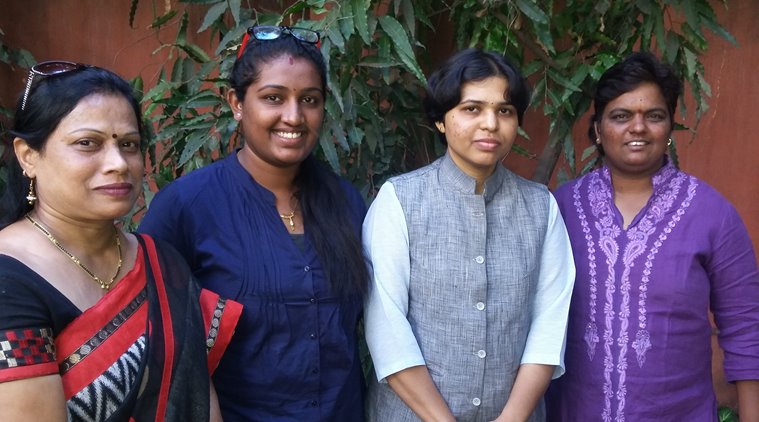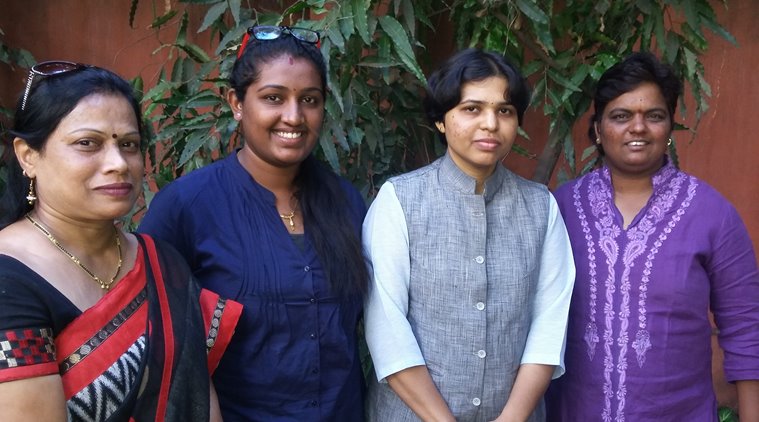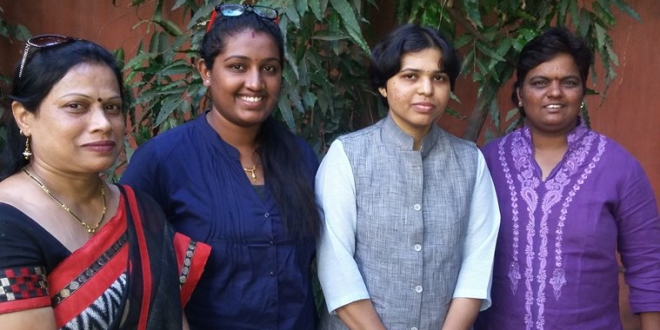
 The four women from Pune who had almost climbed the platform where the Shani idol is kept. (Source: Express)
The four women from Pune who had almost climbed the platform where the Shani idol is kept. (Source: Express)
On November 28, CCTV cameras installed near the Shani temple at Shani Shingnapur captured an unidentified woman offering prayers. This led to an uproar, which was picked by news channels. The next day, the villagers of Shani Shingnapur gathered to condemn the act and organised a “puja” to sanitise the temple. The reason: It is a centuries-old tradition that women should not offer prayer here and if a woman does, the platform becomes “impure”. The irony is that exactly 125 years ago to the day, revolutionary social reformer Mahatma Jyotiba Phule breathed his last. Phule and his wife, Savitribai, are considered to be the pioneers in women’s education in this country.
Shani Shingnapur in central Maharashtra became a famous pilgrimage destination after Gulshan Kumar produced a movie about it. Apart from restrictions on women offering prayers in the temple, the village has another claim to fame: It is held that there hasn’t been a theft there for decades, despite the fact that not a single house has a door. But the numerous FIRs in the local police station tell a different story. The Maharashtra Andhashraddha Nirmoolan Samiti (MANS) or the Maharashtra Blind Faith Eradication Committee, under the leadership of the late Narendra Dabholkar, has fought against such blind beliefs for the past 15 years.
Similar incidents at the Sabarimala temple and the Haji Ali dargah in the recent past have led to protests like the “happy to bleed” campaign and a PIL challenging the dargah’s stance, respectively. Even today, there are many places of worship, across different religions, where women are not allowed to offer prayers.
The main reason for such practices is the secondary position of women in all religions. There can be a difference in magnitude but in almost all religions, including Hinduism, Islam, Christianity and Buddhism, religious texts support gender-based inequality. How can we stop supporting such obviously exploitative practices from being carried out in the name of religion? The only way out, in our opinion, is to start questioning these exploitative practices using reason and courage.
The biggest problem in doing so is that people with vested interests will start criticising you. If you do not stop, they will start calling you “kafir” (disbeliever) and “dharmdrohi” (anti-religious). And if you still do not stop, they might harm you. But we must remember that all social reforms happen at a cost. Let us think what would have happened if Mahatma Phule and Savitribai had resisted reformatory practices in their time. The answer is obvious.
Still, it’s understandable if we find it difficult to challenge religious beliefs. After all, we are living in an era when people like Narendra Dabholkar, Govind Pansare, and M.M. Kalburgi were brutally gunned down. But then, who will inspire us to keep challenging such religious beliefs?
Let us share a story of the protest that Narendra Dabholkar led 15 years ago at Shani Shingnapur. MANS activists, accompanied by Shriram Lagoo, Pushpa Bhave and N.D. Patil, challenged the tradition of not allowing women to offer prayers. Though they were arrested before they could reach the sacred platform in the temple, the stir they started could not be stopped. The woman who showed the courage to challenge the temple’s traditions on November 28 has taken the battle forward in her own way.
The voice of reason has become so loud and clear that it can no longer be ignored. But let us remember, this is just a single step forward. If we want to hasten the process of change, all of us should make clear where we stand on the issue. Do we support gender equality or do we intend to suppress women in the name of religion? It is high time we accepted that challenging unjustifiable practices does not threaten a religion. What does threaten it is allowing such dehumanising practices to continue.
![]()
Source: New feed






